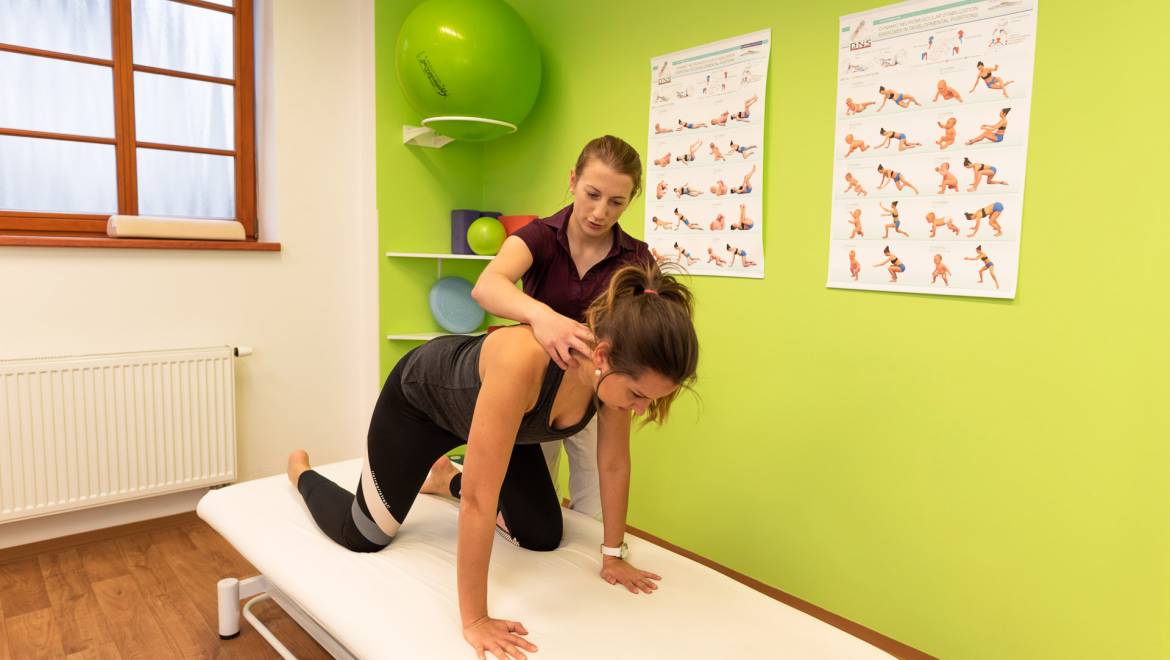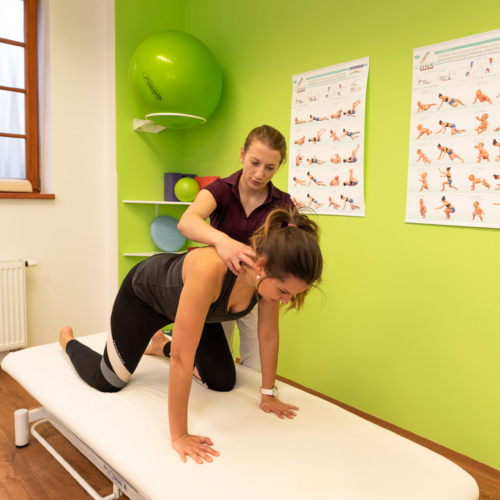What preventive measures are required to follow and why
Whether you underwent conservative treatment or you’re already after surgery, without complying with some preventive measures that come out of what’s known as ‘Back School’, the whole effort to improve your condition permanently could go wrong.
Let’s try to illustrate it on the example of a car. Imagine having a broken car, or one that simply doesn’t work too well and is on a verge of a breakdown. There’s a risk of something happening or the car stopping every time you take it out for a ride. Knowing this, you probably wouldn’t even take it to service until it’s too late and one day it just doesn’t start. Everyone would drive with such a car cautiously, slowly, and avoid any rough roads or turns because it would be clear that one mistake is enough to cause an irreparable consequence. So is the case with our spine and vertebral discs, but also with any other dysfunction in general in our bodies.
However, we have one great advantage, and that is our self-correctional mechanisms. We don’t have to go to ‘service’ to have a component ‘tuned up’. If we give the body good conditions, it’s able to repair some damage itself. Technically, it doesn’t fix it to its original state and it would depend to what extent the damage is as well, for example, if cartilage is missing from the knee completely, the body can’t just replace it. However not everyone with structural damage have difficulties. There are people with degenerative changes for example that are completely without pain. Why is that? Many other factors play a role here. They have, perhaps, good movement awareness and can compensate for such difficulties well, or perhaps just have a good life and mood because as we all know, there’s a strong connection between the psyche and sensation of pain or our pain thresholds.
Bringing us back to the preventive measures, you just need to be careful about every movement to prevent micro-damage and overload. On the contrary, it’s best to create an environment suitable for self-treatment. For example, excluding daily life activities that put you in such postures that would strain your back. It’s necessary to keep in mind the correct posture in all activities you do, from sitting, standing, to the correct way to get in/out of the bed, clean, cook, etc. It’s also sometimes necessary to adjust things around us in an ergonomic way to aid us in the recovery. Some examples include changing your desk chair at work, your mattress at home, etc. if necessary.
When traveling by car, it’s advisable to keep regular pauses, as well as when sitting at work, you should get up and walk every hour. Sitting with a lumbar support (or over-ball, cushion) can also help create a better sitting posture. You should also avoid lifting and wearing heavy loads, and for example to use a backpack instead of handbags and bags over one shoulder. It’s also wise to include a weight regime, for example for those who are overweight or obese. Weight loss can come a long way in the recovery process and decreases overloading of the spine and joints.
Regular exercise as well, will greatly reduce healing time and serves as one of the best preventive measures. It would prepare your body’s ability to readily compensate to stresses that are sudden or unexpected. Exercise should be those that allow you to regain your flexibility and strength. In addition to a regular daily exercise program according to the physiotherapist’s instructions, it’s also possible to engage in recreational sports as long as it doesn’t aggravate your symptoms or are too difficult. Find a physiotherapist that could test your fitness and find out your current status and help you find the ideal sport for your condition. Recommended light-weight activities include swimming (discluding the breast style, as there’s too much flexion in the cervical spine), cycling (care must be taken with maintaining upright posture) and hiking, especially with the use of trekking sticks. Inappropriate sports include those with quick changes in movements, hard impact sports and racket sports.
It’s advisable to avoid also avoid cooling methods, or from your spine getting too cold. It’s necessary to wear long T-shirt that cover your back completely or warm lumbar belts – not those for support, but the woolen ones that hold warmth. Hydration is also a very important factor – make sure you drink plenty of fluids to keep your body hydrated. It’s been found that smoking can also affect the degeneration of the intervertebral discs as nicotine constricts the blood vessels around the spine, causing depleted blood flow to the discs.
As for lumbar belts, neck collars and other types of braces, their use is appropriate for serious conditions of acute pain however for long-term wear they wouldn’t contribute to the improvement of the health and on the contrary, their use would weaken the muscles and result in prolonged rehabilitation.
We successfully treat acute outbreaks of herniated discs. If you have any questions, please don’t hesitate to contact us. You can learn more about how we work here.
Výhřezy plotének s úspěchem léčíme. Zde více o tom, jak pracujeme.
Mgr. Martina Metlická, Mgr. Dagmar Lisá


